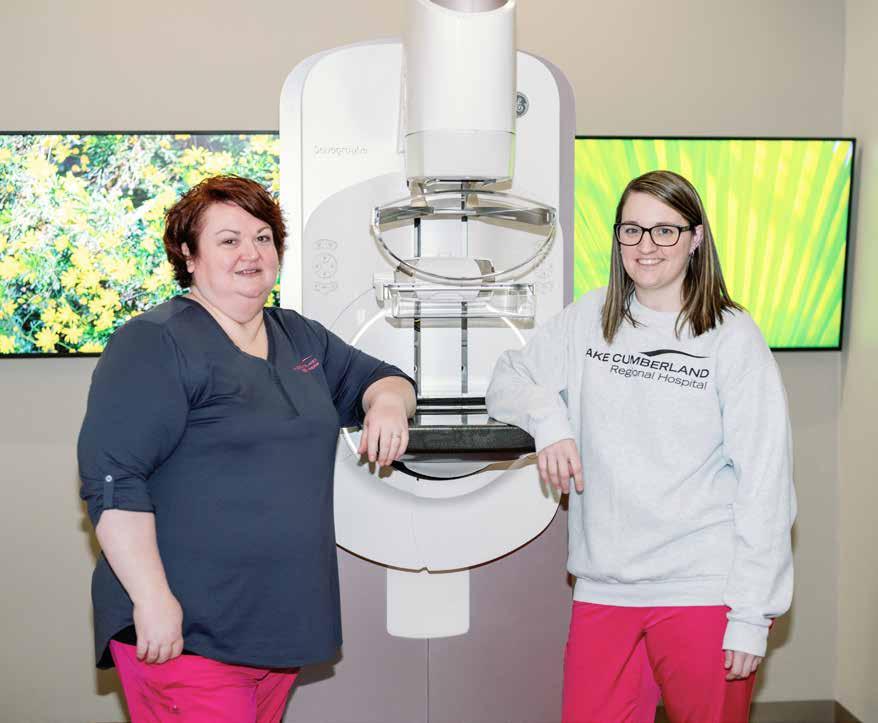




Thank you for picking up our August issue. You might have noticed on our cover that we’ve updated our tagline to read, “Navigating Health, Wellness, Life, and Creativity,” so we can include more topics that you are recommending. Please keep the ideas and comments flowing. We want the Compass to be all about what YOU want it to be.
One could say we’re doing just peachy as we jump right into August with Dr. Jennifer Compton of Somerset Vision Center who has provided us with an extensive overview of children’s eye health for National Eye Exam Month. This should be a must read for every parent. I wish I had access to this information when my kiddos where younger.
Lactation consultant and LCRH nurse Ashley Hoseclaw, and experienced mom of four Brittany Prater, discuss the Latch with Love breastfeeding support group. Find out why it’s a great resource for all moms, expectant moms, or those thinking about becoming moms. Again, this is valuable information I wish I had access to when I was having my own babies.
Melanie Lawless explains why native plants are so beneficial to our environment and outlines how and why you might want to plant some in YOUR yard.
And a big THANK YOU for submitting your recipes for National Peach Month. You’ll find a variety of them in this issue, along with some interesting tidbits about peaches.
We’re grateful you came along on this journey with us again this month and are thrilled to share these pages with you!
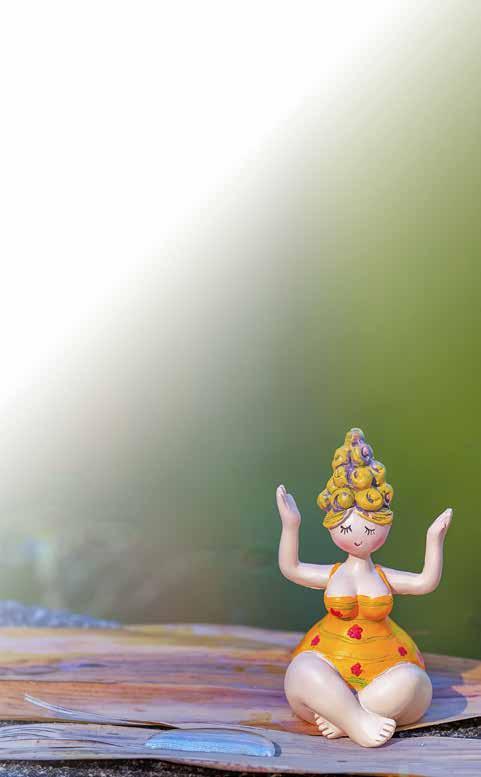


https://lp.constantcontactpages.com/sl/hXwoNKI

Cover Photo of Bridget Compton, 8, by Lisa Rowell

Volume 1, Issue 2
August 2024
—EDITOR / DESIGNER—
Lisa Rowell
—ADVERTISING SALES—
Jordan Rowell
—CONTRIBUTORS—
• Jennifer Compton, DO
• Melanie Lawless
• Christina Zaccanti
• Lake Cumberland Regional Hospital
Lake Cumberland Compass is a independently published periodical in Somerset, Kentucky, by Compass Communications, LLC. Content is for entertainment purposes only. Print copies are distributed throughout Pulaski County. Digital flip books are available for free at LCCompass.com.
All rights reserved. No part of this publication may be reproduced or stored for retrieval by any means without written permission by the publisher. The publisher is not responsible for unsolicited materials and accepts no responsibility for the contents or accuracy of claims in any advertisement. Lake Cumberland Compass is not responsible or liable for any errors or omissions and reserves the right to refuse or reject any submitted content. The opinions of contributing writers do not necessarily reflect the opinions of the publisher.
LCCompass.com
email: info@LCCompass.com
facebook: @LCCompass
© 2024 Compass Communications, LLC
Format: Online ISSN 2998-3576
Format: Print ISSN 2998-3568


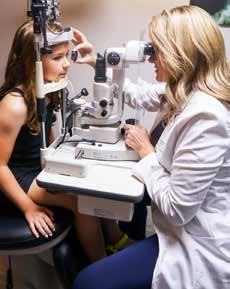


We asked Dr. Jennifer Compton of Somerset Vision Center to answer some questions about children’s vision health and to provide some insight into how to best care for our children’s eyesight.
While she enjoys caring for patients of all ages, Dr. Compton has a strong interest in pediatrics. Her belief in the importance of pediatric eye care led her to create a Mobile Eye Clinic that goes to area public schools, providing complete eye exams for students.
Dr. Compton’s mission is to reduce the obstacles that stand between children and the regular, preventative eye care they need. The Mobile Eye Clinic can help alleviate those barriers, including lack of transportation. It can also help parents not have to take time off from work to go to their children’s eye appointments.
If Mobile Eye Clinic services are offered at your child’s school, paperwork will be sent home with your child in August.

With Jennifer Compton, DO
When is a child’s first eye exam recommended?
The American Optometric Association recommends that all children have their first complete eye examination by an eye doctor (optometrist or ophthalmologist) between 6 months and one year of age. Subsequent examination is recommended at least once between ages three to five and again at age six and yearly thereafter. To simplify this, I generally recommend a child’s first examination between six months and one year of age and annually thereafter. The early childhood years are a time of rapid developmental changes and learning. I really like to keep a close watch on these patients because their measurements (visual acuities, prescriptions, eye teaming and visual processing abilities) can change significantly in the course of a year. If we find that there are deficits or they are struggling academically, the sooner we intervene, the better the outcome. The guidelines from the AOA are for asymptomatic or low-risk children. Symptomatic and high-risk children may need more frequent evaluation.
There are some truly interesting statistics, that through the course of my career, I always gravitate back to:
Dr. Jennifer Compton’s daughter, eightyear-old Bridget, helps her demonstrate what a typical eye exam for a child might entail.
1. Eighty percent of a child’s learning occurs through vision.
2. It is estimated that 10 million children need eye care in the United States.
3. Half of these children face barriers that prevent them from receiving vision services
4. One in four children in the U.S. has a vision issue significant enough to affect their ability to learn
Kentucky is a wonderful state with regard to their initiative to make sure students have an eye exam before entering preschool or kindergarten. This is a requirement for all children in public school within the state. Fortunately, unless a child is home schooled or in private school (these institutions do not fall under the same rules), all students in Kentucky must be evaluated at least once within their early childhood years. This enables us to identify any ocular or visual issues that will prevent normal vision development. I’m thankful to work in a state that has this legislature. It truly makes a difference.
Are there any signs that would indicate a child should have an eye exam sooner?
There are some telltale signs that a child needs an eye exam, but to be honest, most children are asymptomatic. When I have a pediatric patient with an issue that needs addressed, the first thing I tell the parent is that they did the right thing by bringing the child in for preventative care and even myself, as an optometrist, would not be able to detect many issues in my own daughter if I didn’t do a complete, dilated eye exam on her. There tends to be a lot of parental guilt in these situations, but if you’re bringing your child in for routine preventative care, you’re on the right track.
Children, in general, are not big complainers. They also aren’t able to discern what they should and should not be able to see. It is rare to have a child, even if they do notice a difference or discrepancy between their eyes, be able to communicate this to a parent or teacher. However, overt signs that a child needs to be seen are a crossed or a turned eye (strabismus), the closing of one eye on a regular basis, a droopy eyelid or abnormal light reflex in the pupils (for example, one pupil looks white while the other appears black). Also, if you walk into a room and your infant or toddler consistently does not seem to notice you or engage with you unless you make noise, this would be an extreme sign that the child may have a significant visual deficit.
How can someone best prepare their child for an eye exam?
First, do your homework and ask around. Some offices are more child-friendly than others (shorter wait times, play areas for children, staff and physicians that
are comfortable with and enjoy caring for kids). These things matter. Also, I’m a big believer in being honest with my daughter when we’re going to the doctor about what will happen so that she’s not caught off guard and she doesn’t think that I’ve omitted information or lied to her about what the visit will entail. We let the parents know that at the first eye exam, they need to arrive a bit early and we will be dilating their child so that we can fully evaluate the health of the internal structures, as well as external
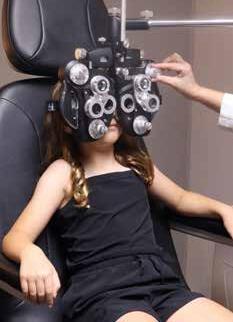


Capitalize on the talents of Americans with disabilities with employment practices that benefit everyone. Learn how your organization can help advance the employment of people with disabilities and access resources to assist in recruiting, retaining and promoting skilled, qualified employees.
structures, of the eye. Dilation for young children also helps us determine if there is any latent or “hidden” prescription that we might not have been able to detect undilated. The dilation drops for these first eye exams usually take about 30 minutes to take effect, so we let the parent know that after we dilate, the child can play in the play area and they can relax. We let them know that their child will be light sensitive and his or her near vision will be blurry and the duration of these side effects. We reassure them that the child will be given sunglasses at the end of the visit to make him or her more comfortable.
“The most common thing I’m looking for in pediatric cases, especially in their early childhood years, is anything that would prevent them from having the ability to develop normal vision.”


As far as what I tell the patients and parents when I first meet them in the exam lane, I let them know that we’re going to check a few things to make sure their eye muscles are strong, that their eyes are working together and that they’re healthy. We’ll use some special lights to do this. I let the child see the lights and hold them before we use them. This usually decreases any anxiety they have. We’ll also see if any glasses prescription is needed or anticipated in the near future. Parents are often fairly anxious about how their child is going to react to the eyedrops and also what will happen if they cannot read the eye chart. I tell parents not to worry. Even if their child is having a bad day or is minimally or even non-verbal, there are objective tests that we can do. An accurate, full eye examination can be done without the patient saying a word. Now, we love it when they do give us subjective responses and interact, but every child is on their own timeline when this happens developmentally, academically and socially.
In the event that we have a child who, typically due to significant medical issues early in life, is terrified of doctors and medical offices, I may just have the child come in first to get to know us and get comfortable. I like to develop some rapport with the patient and family. I might defer dilation at that visit and have them return in a couple weeks to take care of that portion of the exam. This doesn’t happen often, but we do allow for some flexibility if the situation calls for it. Occasionally if a child is terrified of eyedrops and instilling them in office would create significant anxiety, we’ll allow the parent to give the child their eyedrops the night before their appointment in the comfort of their own home. We try to do what works best for the individual child and family.
What are some common issues you see and how easily can they be corrected?
The most common thing I’m looking for in pediatric cases, especially in their early childhood years, is anything that would
prevent them from having the ability to develop normal vision. The most common issues that can stunt vision development or cause a condition called amblyopia are:
• Unequal vision or unequal glasses prescriptions in each eye, usually farsighted in nature;
• An eye turn (strabismus);
• Ocular disease (which thankfully, is not as common as the other causes above).
The way I explain this to parents is that in the early childhood years, there are so many neural connections being made between the eyes and brain. For lack of a better way to say it, the brain can be a bit “fickle” during these years and if both eyes are not seeing equally (due to any of the issues above), the brain will essentially shut down vision development to the eye that is not normal (the eye that doesn’t see as well, has ocular disease or is not aligned properly). If these issues are caught early and addressed, we can encourage the brain to pay attention to the abnormal eye (the one that doesn’t see as well naturally or the eye that has the tendency to turn). This is typically accomplished with glasses prescription, patching therapy and in some cases, eye muscle surgery to realign the eye.
If my child needs glasses, is it likely he or she can “outgrow” the need for them in the future?
It truly depends on the type and magnitude of the prescription. Moderate to low farsighted prescriptions are often outgrown as the child gets older. Severe farsighted prescriptions may
not be outgrown. Nearsighted prescriptions typically worsen as the child ages. I tell these parents to prepare for their child to have a lifetime of prescription wear, whether it be glasses or contact lenses. Astigmatism is a bit less predictable. In mild prescriptions, they may outgrow or be asymptomatic. In moderate to severe astigmatic prescriptions, they will likely need glasses or contacts for their lifetime. Patients may also be LASIK surgery candidates in adulthood if they are interested as well.
What kinds of glasses do you recommend for a child? At what age are children responsible enough for contact lenses?
For children, the durability and safety of the prescription is of utmost importance. For infants and toddlers, we typically recommend one-piece rubberized frames. They are flexible, there are no sharp edges or hinges to worry about and they can take a beating. Children are not known to be the easiest on glasses. As the child matures and becomes more responsible, many times they like to pick out “big boy or big girl” glasses that look more like smaller-sized versions of what their parents might wear or they see their peers wearing at school. Some children prefer plastic frames. Others, particularly those with small or flat nasal bridges, may benefit from metal frames with nose pads to help keep the frames from sliding down the nose. These are all on a case-by-case basis. We do recommend all lenses for minors be made of a material called polycarbonate.






“For sports, contact lenses or sports goggles (which are specific safetyrated frames and lenses) are always recommended.”
The reason why we recommend this material over some other plastics is that polycarbonate is less likely to shatter in the event of blunt force, such as in a car accident or getting hit with a ball at a sporting event, for example. We want do not want the frame or lens to cause injury to the child. Now, for children playing sports, regular glasses are not recommended. For sports, contact lenses or sports goggles (which are specific safety-rated frames and lenses) are always recommended.
Regarding contact lenses, the middle school years are typically when we notice most pediatric patients inquiring about starting to wear these. However, I’ve encountered some 6- and 7-yearolds that are more mature and responsible than some of my adult patients and we fit them in contacts and they did fantastic. What I tell parents is that when the child is truly interested and motivated to wear contact lenses and the parent thinks they are ready for the responsibility, we’ll try it. If I sense that the parent is pushing for contact lens wear and the child is not interested or is terrified, I’ll discourage it. On the flip side if the child really wants
School screenings provide of the generatedinformation during a comprehensive eye exam. School screenings miss up to of children with vision problems. School-age children have a vision disorder.
Squinting, headaches, and trouble reading the blackboard are all obvious signs of vision issues in children. But it’s equally important to keep an eye out for the not-so-obvious signs that can often be mislabeled as behavioral problems or learning disabilities.
Difficulty completing tasks quietly & easily angered or frustrated Difficulty andorganizingprioritizing work and time
Heavy reliance on pictures to ‘read’ or auditory
Disruptive or inattentive in class
learn more about children’s vision and to find an optometrist near you, visit AOA.org/EyeDeserveMore
to, but the parent is hesitant or likely won’t be a good support system for the child in the learning process, I’ll recommend that we wait until both parties are ready. Both the patient and parent have to be on board, otherwise, it will not be a good experience. As a contact lens wearer myself, I also know that a bad first experience with contact lenses can really make or break it for the patient. I have some adult patients that are mentally scarred by how poorly their first contact lens experience went, that they’ve resorted to full time glasses wear
and are afraid to retry as an adult when it would truly benefit them. We try to ensure that we’ve checked all our boxes and everyone involved is motivated and invested. It makes a world of difference.
Dr. Jennifer Compton is a licensed Doctor of Optometry. She is a 1998 graduate of Somerset High School. She received her Bachelor of Arts Degree in Child and Family Studies from Berea College in 2002 and went on to earn her Doctorate from University of Alabama at Birmingham School of Optometry. She has been practicing since 2008. Dr. Compton is accepting new patients at Somerset Vision Center located at 709 E. Mt. Vernon Street, Suite 1 in Somerset. Call 606-679-5177 or visit www.somersetvisioncenter.com.




Story and photos by Lisa Rowell
Ashley Hoseclaw, MSN, RN, IBCLC, is a lactation consultant and registered nurse at Lake Cumberland Regional Hospital. In her more than two decades of supporting new mothers in their quest to understand breastfeeding, she has seen a lot of gadgets and trends, and has heard all the changing advice when it comes to how mothers feed their babies. The one thing that hasn’t changed, is their determination to make it work.
To decode all those letters after Ashley’s name — she earned her master of science in nursing (MSN), and is an International Board Certified Lactation Consultant (IBCLC).
The birth of an idea
Dr. Alecia Fields, an OB-GYN physician, suggested starting a lactation support group. With the help of former medical student Megan Carugati, who has since moved on to her residency, they formed the group. Ashley said

that although the group was modeled after some similar national groups, it’s uniquely their own. “That way, we were free to do what we wanted,” she said.
The program started in January of this year, with about eight to ten mothers attending. They see upwards of 13 at any given meeting.
The hospital, which sponsors the group, posts the meeting dates and locations on its Facebook page, as locations can vary. They often will meet at the library.
Ashley said it’s not a clinical group, so meeting off-site works by providing a comfortable atmosphere where moms can bring the kids in a more relaxed environment for informal dialogue between them.
One such mom, Brittany Prater, had all three of her babies at LCRH. She said the support group in our area was long overdue. As most mothers will admit, emerging technology coupled with advice about childbirth
and feeding newborns can be confusing and daunting.
“My first child is ten. There were eight years when I wasn’t having babies,” Brittany said. When she had Jett, who is now two, she said there was a lactation consultant in the area but she had unanswered questions. She knew she wanted to breastfeed but wasn’t aware of all the benefits and whether or not it was going to be the right choice for her and her then-newborn.
“I felt like there was not enough advocation for breastfeeding,” she said.
As an exhausted new (again) mom, easy access to formula atthe-ready might have swayed her decision to give breastfeeding a solid try.
Ashley said, “If a mom comes in and says she plans to breastfeed or breast and formula feed, we do not take formula into the room.”
It opens an educational opportunity if the mother has trepidation about her choice to breastfeed. Ashley said a new mother might have anxiety over whether she has enough milk for her baby. She explained that babies typically do what’s called “cluster feeding” as newborns, which helps bring the milk in. “Cluster feeding is when they’re feeding off and on over several hours. They may breastfeed for 30 minutes, then they’re off for 30 minutes, then they’re back on again,” Ashley explained.
It’s easy for a new mother to feel like she’s not doing it right or that she isn’t producing enough for her baby to thrive.
“That’s where people stop,” Brittany said of trying to breastfeed. “When formula is readily available, and your nipples hurt, and the baby is crying, you’re going to grab the formula.”
Without the benefit of the Latch with Love program at the time, Brittany said she was reading and researching everything she could find about breastfeeding while prepping the nursery for baby Jett’s arrival.
“It’s hard in the beginning. It gets so much easier,” she said as she bounced six-month old Blaine on her knee. She said if there had been an extra push or education at the time, it would have reassured her.
“It’s actually easier than formula feeding because you ARE the milk,” Brittany said about breastfeeding. “It’s less things that I have to take out of the house. I usually carry a clutch that has wipes and diapers, and that’s it, because I don’t need anything else.”
Ashley said breastfeeding can be tough in the first couple of weeks but you have to trust the process. “You’ll know things are working by the cues from the baby. The hands are more relaxed after the feeding. They may still be doing hand-to-mouth motions and smacking of the lips because that’s normal baby behavior but they are not going to have fists.” she explained. “Their bodies don’t feel tense, they’re more relaxed. Your breasts will feel full before a feeding and will feel a little softer after. The baby is happy
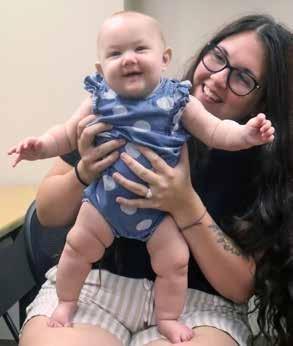
and having wet and dirty diapers, they’re gaining weight when you go for your well baby checks.”
Brittany stressed that there is no judgment from the support group when it comes to how any mother chooses to feed her baby, whether it’s breast feeding, formula feeding, or a combination. Each family has their own needs and the members of the group respect that.
Brittany and Ashley agreed the Latch with Love group is there

Brittany Prater, with her youngest child, Blaine. For Brittany, breastfeeding her babies was a natural choice. She shares her knowledge and experiences with other mothers through the Latch with Love support group. Founded earlier this year through Lake Cumberland Regional Hospital, Latch with Love is an informal group that meets off campus at various locations. In addition to offering lactation support, the group is also source of moral support for all mothers, regardless of how they choose to feed their babies.
for support for mothers with babies of any age, or who may be expecting, or thinking about expecting, no matter how they choose to feed their babies.
Ashley said the informal setting opens up comfortable and easy dialogue that might include mothers talking about which pumps work best for them, or where to obtain certain supplies. Brittany said it’s the little tips and tricks the mothers share that make a difference. “Those are the things that help get us through,” she said.
Brittany said it can be confusing to look at all the controls on a breast pump and understand which button to press. That’s where the sage advice from the group can make a big impact and take some of the mystery out of the process.
Ashley said there are many reasons why a new mom may choose to pump out of necessity, such as school or work. “If you’re going to be separated from your baby for whatever reason, you are going to need to be able to utilize a pump.”
it. Those hormones work the way they’re suppose to. So moms that exclusively pump typically tend not to breast feed as long because their supply is not as great.”
“Let’s just be moms in this season of life together.”
Brittany said everybody responds to pumps differently. Brittany and Ashley agreed that choosing a pump is a matter of preference.
These are the kinds of topics the mothers discuss at the Latch with Love group meetings, along with just checking in with each other.

“What’s going to keep the breastfeeding relationship going is breastfeeding directly when you’re together, and when you’re apart, replacing those feedings you’re missing with a pumping session,” Ashley explained.
She cautioned that if a mother is strictly pumping and bottle feeding, the pump does not get the same amount of milk out that a baby naturally does.
“A pump is not a great indicator of how much you are producing,” she said. “Especially in the early days, the colostrum — the precursor to milk — is thick and it’s sticky, and a pump doesn’t get it out well. Even later when the milk is more watery and it’s easier to get out, you have no emotional attachment to a hunk of plastic, whereas when your baby latches on, it’s natural and you don’t even have to think about
Ashley said another reason the group is so beneficial is listening to a mom like Brittany communicating what she went through and how she educated herself. “There’s a lot of value in words from a peer rather than a professional,” she said.
Sometimes the group will casually discuss clothing that is made specifically for breastfeeding. She said the stigma of generations ago that expected breastfeeding mothers to use a cover is going by the wayside. “I love this generation’s push for breastfeeding. I will tell you — a baby this active — you can forget a nursing cover. We don’t have a nursing cover at home. I love the direction it’s going because it’s making a lot more moms comfortable,” said Brittany. Ashley agreed. “This is normal. This is how it should be. This is how it should have been from the beginning. It’s on trend to breast feed now. That is the healthiest trend I’ve seen.”
“A lot of moms are doing great,” Ashley encouraged. “They come to meet like-minded mommas, to have community, or social time.” She said it’s a place for interested moms or those who feel challenged, or who want to share their experiences. “It’s whatever the reason may be to get the information to make that breastfeeding journey happen.”
Brittany said, “It’s camaraderie and togetherness. Let’s just be moms in this season of life together.”
Ashley said participating in the group is a social thing and you can just so happen to learn something while you’re there, or connect with another mom. “You don’t have to have a problem to come. It’s just that community, it’s that support of other mommas.”
Brittany added that it’s a safe space for moms to just check in with one another.
Ashley encourages anyone who is interested to attend their next group meeting. They may have a guest speaker, a craft project, giveaways or door prizes, resources, and information. Keep an eye on the hospital’s Facebook page: facebook.com/ LakeCumberlandHospital. ❤
By Christine Zaccanti
You know how it goes: sitting outside at a picnic, relaxing all afternoon on the boat, lounging in the shade with a great book. Then you look at your hands and notice your wedding band you have worn for years now looks like a boa constrictor squeezing the life out of your swollen finger. What about the shoes you comfortably wore a few hours ago that now seem two sizes too small? What’s happening?
One reason may be heat edema. As you may guess, heat edema occurs in warmer months or climates. As a new transplant to Kentucky, I was shocked one evening
on my way to a speaking event when my shoes looked like they had been shrink wrapped to my feet. The heat and humidity were sending alarm bells to my inner hygrometer.
According to New York Presbyterian, “Heat edema is swelling that commonly happens in hands or feet, often after sitting or standing in a hot environment.” When the thermometer starts to rise (and keeps rising) our blood vessels dilate and, without much movement, fluid can accumulate.

Anyone can and may experience heat edema. When electrolytes become imbalanced, which can easily happen through sweating without any activity, edema may result. Those who have health conditions, including heart, circulatory, kidney, or lymphatic issues may be at risk as well.
What should I do if I am showing signs of heat edema?
As a lymphedema therapist, I would advise my patients to speak to their physician. Edema may be a sign of an underlying medical condition.
The Kimmel Institute in Florida recommends, “not sitting or standing too long in the heat, drinking plenty of water, and add a little movement.” Elevating your legs, moving to a cooler
environment, or dipping your feet in some cool water may also ease symptoms. Again, seeking the advice of your physician is best to rule out any other causes of your edema.
These long awaited, dog days of summer can arrive with a downside, and heat edema is one of them. Remember to listen to your body, it may be asking you to just, “cool it!”
Christine Zaccanti is a medical massage practitioner, certified lymphedema therapist, and educator in Somerset, Kentucky. ZaccantiMassageAndEducation.com
New York Presbyterian. “Heat Edema (swelling).” nyp.org,10/07/2023, www. nyp.org/healthlibrary/definitions/ heat-edema-swelling, 12/07/2024; Kimmel Institute Laser, Vein, & Aesthetic Care. “Could your swelling be heat edema?” the kimmelinstitute. com, 06/06/2022, thekimmelinstitute. com/could-your-swelling-be-heatedema/, 12/07/2024


Inset: the Purple Cone Flower or Echinacea; top: Possum haw or Viburnum nudum (an endangered species); above left, clockwise: Penstemon; Lance-Leaved Coreopsis; and Downy Wood Mint (this one has gone to seed). Photos on pages 14-15 by Lisa Rowell.


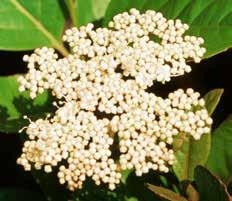
If you’ve been downtown at the corner of East Oak and North Central, or by the Subway at U.S. 27 and Ogden, or by the First United Methodist Church, or the piano park on College, or even if you’ve seen the center median at Pulaski County Park, you may have noticed landscaped areas filled with native plants.
Those spaces are the passion of local master gardener Melanie Lawless, who oversees their care and maintenance. Equipped with the tools of her trade, and a handful of plant-loving helpers from the city, Melanie’s love of plants — and native Kentucky plants in particular — is evident in the care and year-round beauty of the city garden spaces.
Melanie said Brian Gurley, who works for the City of Somerset, was instrumental and supportive in helping to redo the Subway lot and the Oak Street lot. Somerset Garden Club members, including Marc Carter, were also instrumental in getting the Oak Street lot filled with native plants, which Marc maintained for several years.
Melanie has been working with native plants for about a decade now and was inspired by Douglas W. Tallamy’s books, Bringing Nature Home, and Nature’s Best Hope
From the plants themselves, to the insects that eat the plants or take shelter in them, to the birds that eat the insects, there’s a rhyme and reason to the biodiversity of natives in our yards and gardens. By starting locally and redesigning suburbia, as Tallamy suggests, and taking notice of the studies of energy moving through our food webs, you’ll see why Melanie is so passionate about bringing native Kentucky plants to our city’s garden spaces.
If you will give her a moment, Melanie will explain the differences in native plants, what appear to be (but are not) natives, and what are referred to as “cultivars” or man made variations.
See the sidebar at the end of her article (extracted from her Powerpoint presentation) to find out more about native plants, including where you can get some for your yard!

By Melanie Lawless, Lake Cumberland Master Gardener
Native plants have become more popular in the last few years. But what exactly is a native and what role do they play in an ecosystem now more dominated by exotic plants? And why should we care? I hope to inspire you to care what plants you put into your landscape, to choose those plants wisely, and to not settle for less.
Native plants have formed a symbiotic relationship with native wildlife over thousands of years, and therefore offer the most sustainable habitat.
A plant is considered native if it has occurred naturally in a particular region, ecosystem, or habitat without human introduction.
Native plants will thrive in the soils, moisture, and weather of their native region. That means less watering and no fertilizing or chemical application ever.
Native plants assist in rainwater runoff and in maintaining healthy soils. Their root systems are deep and keep soil from becoming compacted.
Counterclockwise from bottom: Little Bluestem; Common Milkweed; seed head of Baptisia australis (Wild Blue Indigo); Scutellaria incana (Downy Skullcap); Butterfly weed (Asclepias tuberosa ), a species of Milkweed, shown next to Carolina Petunia.
A native plant is one belonging to a species that was present in our ecosystem prior to European settlement. These plants have held an ecological niche for centuries and reproduce, primarily, through open pollination. This is a straight species and what we are planting today in the community spaces.
A cultivar is any plant that is developed or selected for its desirable characteristics. Cultivars are sometimes reproduced through cloning methods. A “nativar” is a cultivar that came from a straight-species native plant.
Nativars can be identified by checking for a variety name in addition to the species name on the label of the plant.
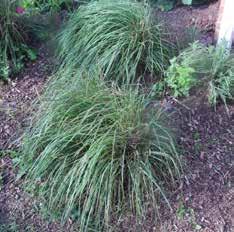
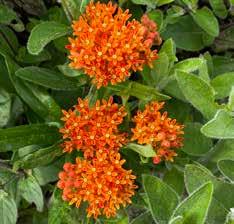
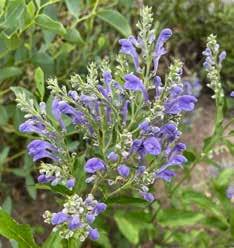

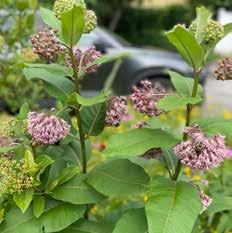


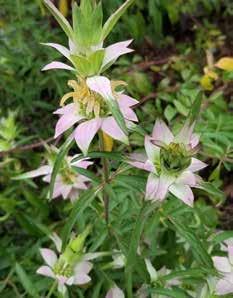



For example, Brandywine Red Maple, Acer rubrum “Brandywine,” is a cultivar, whereas the native, from which it is derived, would simply be labeled as Red Maple, Acer rubrum.
Native plants grown from seed carry the wealth of their native gene pool. They perpetuate this diversity as they grow and participate in successful pollination. This genetic diversity helps whole species to survive and adapt when confronted by environmental stress. Each successive generation of plants reproducing in this manner continues to maintain a rich heritage.
Nativars are sometimes propagated by cloning, so that each plant has the same genetic makeup as the parent plant.
of nativars will have on our ecosystem. And there is a real risk of genetically polluting straight species native plants.
Straight species, openpollinated plants, and the genetic diversity they contain, are the foundation of both nature and horticulture.
Consider buying straight species native plants from native plant nurseries when you can, which are almost exclusively grown from seed! You can save your seed from your native plants and grow your

If only a small percentage of the plants being planted in landscapes are nativars there would be no need for concern. But the mass-production and increased use of nativars over straight species native plants is a concern. Simply put, we don’t know what impact the overuse
Ninety-six percent of all terrestrial bird species feed their young insects. The chickadee needs to hunt between 350-570 caterpillars every day for 16 days to feed its young. It hunts within a 50-yard radius of its nest. That’s between 6,000 and 9,000 caterpillars needed to feed the young of each “clutch” of birds! Insects are also the sole food source for other birds, bats,

amphibians, reptiles, spiders, and mammals like opossums.
Twenty-three percent of a black bear’s diet is insects.
Insects are under-appreciated for their role in the food web!
Ninety percent of insects are specialists, consuming only native plants. The reason is insects and native plants have co-evolved together.
It takes a long evolutionary time span rather than short ecological periods for insects to adapt to the specific chemical mix that characterizes different plants.
All plants have chemical defenses that prevent insects from eating them. Our native insects have had enough time to overcome these chemical defenses to be able to eat native plants.
Introduced or non-native plants often have different chemical defenses than our native insects have encountered, making the plants difficult for them to consume.
Monarch caterpillars can only eat native milkweeds. No milkweeds means no Monarchs. Don’t be tempted to cut back your
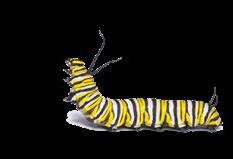
Milkweed when it starts to look tattered, as it likely contains Monarch eggs. Bees are picky eaters, too. Indigenous bees are four times more likely to use native plants for nectar than non-native plants.
Plants at the bottom of the food chain convert the energy of the sun into biomass which feeds insects. Ninety percent of insects can only eat native plants. Ninetysix percent of birds need insects to feed their young.
So, if you have a landscape without native plants, you’re going to have fewer insects, fewer birds, fewer amphibians, and this cascades up the food chain.
Native plants are low maintenance, they’re beautiful, they provide healthier places for people, they help the climate, and conserve water and wildlife.
Non-native plants are pretty, but they don’t provide the ecological benefits that straight species native plants do. These plants are mostly from other continents and have chemical defenses that our insects cannot eat. They frequently turn out to be invasive.
If your nursery doesn’t carry straight species native plants, ask them to start.
Joy of Natives Native plant nursery and wildflower Farm — Nancy, Ky., plants only; Joyofnatives@gmail.com; 606-305-0316 Melanie
Ironweed Native Plant Nursery — Columbia, Ky., plants only; Ironweednursery.com
Dropseed Nursery — Goshen, Ky., plants and seeds; dropseednursery.com
Roundstone Seed — Upton, Ky., seeds only
Missouri Wildflower Nursery — catalog, seeds and plants; Mowildflowers.net
Prairie Nursery — catalog, prairienursery.com
Prairie Moon Nursery — catalog, seeds and plants; prairiemoon.com

We are women who are passionate about growing native plants. Our goal is to make Kentucky native plants accessible to gardeners in our area. Our plants are predominantly seed–grown, and many come from local seed stock. You will not find cultivars of our beloved Kentucky natives. Genetic diversity is behind this decision so our plants will be more resilient. This quote from Lady Bird Johnson encompasses how we feel about indigenous plants:
“For me, wildflowers are joy-giving. They have enriched my life and fed my soul and given beautiful memories to sustain me.”
Family Features
Your home’s first big impression is its curb appeal, so if your place is in need of some sprucing up, you may wonder how you can make some updates without breaking the bank.
These 10 ideas are easy on budgets, but they can also make a big impact on your home’s exterior image.

in good condition, there’s no need to replace it completely. A fresh coat of paint can instantly update your home’s facade. Go bold or stick with a classic hue - it’s all up to you.
Dress up the windows
Add character and charm by enhancing your front windows. You might add wooden shutters, window box planters or both. Also
look at the trim around the windows. If it’s chipped and peeling, adding a fresh coat of paint doesn’t just look nice, it can protect your windows from damage, too. Clean up flower beds. An unkempt flower bed can drag down an otherwise stunning home. Keep beds tidy and vegetation trimmed, even during the offseason. Watch for weeds and replenish mulch or rock ground cover as needed to keep the beds looking healthy and inviting.
Add new vegetation. Landscaping is a relatively inexpensive way to introduce more personality to a yard. Aim for a mix of pretty and practical, such as some low flowering bushes and some trees or bushes that offer privacy and shade.
Paint your front door. As long as your front door is Qui































If you smoked, you may still be at risk, but early detection could save your life.



















Install new lighting
Replacing outdated light fixtures can give your exterior an instant upgrade. There’s no right or wrong style; just choose a color and look that matches the rest of your design.
Replace worn welcome mats. A cheerful mat at your front door can be an inviting sight for visitors, but those mats inevitably wear with time, and what was once bright and charming becomes dingy and dull. A new mat can help bring back that cheery entry you once cherished.
Pressure wash the drive and walk. Over time, driveways and sidewalks collect an incredible amount of grime. Pressure washing not only eliminates the filth, but the clean surfaces also add to your home’s visual appeal.
Keep up with basic maintenance. When your home is in poor repair, it shows. Pay attention to bent or rusting gutters, imperfections in the roof and other maintenance matters that aren’t just aesthetic; left unrepaired, they can also result in major damage.
Pay attention to details
Functional items like the mailbox might not seem like much of a design element, but these small details can be a big distraction if they’re not in good condition. Update or replace as needed to keep your aesthetic in sync.
Add seasonal decor
There’s no need to go all out for every occasion, but some timely decorations that celebrate the holiday or season can make your entry fun and festive. Coordinate wreaths, planters, signs and other accent pieces for a cohesive look that says, “come on in.”
Find more affordable ideas for upgrading your home and garden at eLivingtoday.com.
We asked Beverly Withers of Century 21 Advantage: What are some of the most important things someone should do before consulting a Realtor® to list their home for sale?
BEVERLY: If you’re thinking of selling your home, here’s a list of to-do’s you might want to consider. First and foremost, pick a Realtor you feel comfortable with and trust to sell for top dollar. With the exterior of your home being the first impression, spruce up your landscape and work on curb appeal! De-clutter your main living spaces, less is best. Take care of any minor repairs or touch-ups needed. Do a deep clean and as much as possible, de-personalize your home. Consider other suggestions your Realtor may make for a quick sale!
Ask her more questions about selling YOUR property. Call 606-875-2398 or visit www.century21advantage.com
If you’re among those looking for ways to clean your home while also going green, it may be easier than you think.
Consider these easy and affordable solutions to help you live more environmentally friendly. You may be surprised to find you already have many of these household products on hand.
Baking soda: A natural, safe, effective and gentle solution, baking soda can serve multiple home cleaning needs. Make a paste of three parts baking soda to one part water. Rub onto silver with a clean cloth or sponge. Rinse thoroughly and dry for shining serving or decor pieces. Additionally, you can sprinkle baking soda on upholstery and carpet to get rid of odors.
Vinegar: With the acidity to help get rid of dirt and
grime around the home, vinegar can be used to clean cloudy glassware. Simply soak paper towels or a cloth in full-strength white distilled vinegar and wrap around both the inside and outside of the glass. Let sit before rinsing clean. To remove lime deposits on your tea kettle, add 1/2 cup distilled white vinegar to the water and let it sit overnight. In the morning, boil the vinegar for a few minutes then rinse with water.
Lemons: With a fresh, natural smell, lemons have the acidity to remove soap scum, clean and shine brass and remove hard water deposits. Just spray some lemon juice on tile surfaces to remove soap scum or hard water deposits. Squeeze lemon juice on a cloth and use to polish brass around the home.
Houseplants: Plants serve as natural air purifiers. African violets and ferns are beautiful ways to help clear the air.
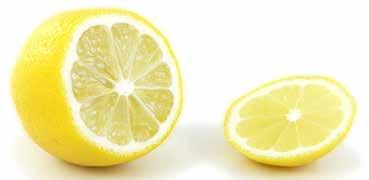
Other easy, green ideas for keeping your home clean
and taking off your shoes when
come inside, which can help avoid tracking






Lake Cumberland Regional Hospital (LCRH) is delighted to welcome Dr. Rebecca Whitworth to its medical team. Dr. Whitworth, a dedicated and skilled family medicine physician, brings knowledge of rural healthcare and focuses on caring for patients from pediatrics through geriatrics and everyone in between.
Growing up in Barbourville, Ky., Dr. Whitworth’s passion for medicine was fueled by her awareness of rural health disparities. Dr. Whitworth holds a medical degree from the University of Louisville School of Medicine and a Bachelor of Arts in Biology from Asbury University, where she graduated magna cum laude. She has received numerous honors, including the Dr. Carl Cooper Jr. Award for excellence in physicianpatient communication and the Family Medicine Leads Scholarship from the AAFP. Dr. Whitworth recently completed her residency training in the Family Medicine Residency Program at Lake Cumberland Regional Hospital under the guidance of program director and family physician Dr. Patrick Jenkins.
Rebecca Whitworth, MD, recently completed her residency at Lake Cumberland Regional Hospital and specializes in family medicine
Dr. Whitworth is committed to providing personalized care and believes in the importance of clear patient communication, fostering long-term relationships, and ensuring that rural patients receive high-quality care close to home.
Carolyn Sparks, Interim Chief Executive Officer at Lake Cumberland Regional Hospital, shared, “We are thrilled that Dr. Whitworth has chosen to stay in the area after completing her residency here at LCRH. Her dedication to rural healthcare and skillset will significantly benefit our community. We take pride in training and developing qualified, competent, and compassionate physicians through our residency programs. Seeing them continue to contribute to our community for years to come is immensely gratifying.”
Dr. Whitworth is now accepting patients at Lake Cumberland Medical Associates, located at 350 Hospital Way, Somerset, KY 42503; appointments can be made by calling (606) 4512600. To learn more visit us online at LakeCumberland PhysicianPractices.com n

Plan how you will communicate if you
Plan for food, water, and essentials have a communication need. for you and pets or service animals.
Include medicines, medical supplies, Plan for your transportation if you batteries, and chargers. need help evacuating.
Plan how you will evacuate with any
Make copies of Medicaid, Medicare, assistive devices. and other insurance cards.
Contact information for important people and care providers. A list of medicines you need, dosage instructions, and any allergies.
Contact information for your durable medical provider.
Need-to-know information for first responders and others who might need to help you.

August is National Peach Month and we’ve looked up some interesting facts about the tasty fruit and asked you — our readers — to share your favorite peach recipes.
u The peach plant is related to almonds, cherries and plums and is a member of the rose family. Depending on the variety, the peach tree can reach heights of 13 to 33 feet.
u The peach, which originated in China, has been a component of the human diet for thousands of years. Portuguese and Spanish explorers brought peaches to the Americas.
u The flower on a peach tree has five pink petals which are mostly pollinated by
are in one of two groups — clingstone or freestone. The flesh of the clingstone peach is tightly attached to the stone (mainly used for canning), while the flesh of freestone peach is easily removed from the stone. This type of peach is mainly sold as fresh fruit.
u Peaches pack a mighty source of vitamins A, B, and C in less than 40 calories for an average sized fruit, along with potassium, magnesium, zinc and phosphorus. They’re also a good source of fiber and and phytonutrients like betacarotene and selenium.
u There are hundreds of varieties of peaches, including the smoothskinned nectarine.
nation followed by South Carolina.
u The fuzzy skin of peaches (called trichomes) acts as a protective layer against pests and insects. It also helps keep in moisture, enhancing juiciness.
u Peaches are best enjoyed when they are perfectly ripe, yielding slightly when gently squeezed. They can quickly become mushy when over ripe.
bit of jalapeño for a sweet and tangy salsa perfect for chips or as a topping for grilled chicken or fish.
u Fruit Salad: Chop peaches and mix them with other fruits like strawberries, blueberries, and kiwi for a refreshing fruit salad.
u Bake up some sliced peaches in a cobbler or crisp. Top with a crumbly topping made of oats, flour, sugar, and butter for a comforting dessert.
u Peach Tea: Brew a pot of your favorite tea and add sliced peaches for a refreshing and fruity twist.


u Georgia may be the state other state in the
Whether you’re simply biting into a wonderfully juicy, ripe peach, just as nature intended, or you’re looking to add peaches to a sweet or savory dish, here are some ideas to inspire you — and some recipes from our readers that are “peachy keen.”
u Peach smoothie, anyone? Add fresh or frozen peaches to plain yogurt, a banana, and a splash of orange juice, then blend.
u Peach Salsa: Toss diced peaches in with red onion, cilantro, lime juice, and a
u Whip up a batch of easy, homemade jam that doesn’t require pectin. Peel, pit, and chop three pounds of fresh peaches and add to a saucepan with 2-1.5 cups of sugar and the juice of one lemon. Boil for 15-20 minutes and mash the peaches. Let it cool and transfer to jars. Store in the refrigerator.
u Peaches go great in savory dishes, too. Try them with chicken or pork chops. n
Recipe submitted by Crystal Cox
Slice peach in half and remove pit (keep skin on).
On a charcoal or gas outdoor grill, place the peach halves cut side down for a few minutes (just to create some grill marks).
Flip peaches cut side up and fill pit with brown sugar. Sprinkle with cinnamon if you like.
Cook until warm throughout and brown sugar has melted. Enjoy! R
With so many variations of the classic cobbler out there, here are a few reader-submitted versions to try.
Recipe submitted by Libby Mattingly of Somerset
A favorite family recipe for over 50 years, this cobbler with peaches and blueberries has stood the test of time. It came from the old red-and-white-checked Better Homes & Garden cookbook I received as a shower gift in 1963. The topping is so good, I use it on all of my fruit cobblers.
Serves 6, Oven 350°F
Ingredients:
• 1 Tbsp. cornstarch
• ¼ cup sugar
• ½ cup cold water
• 2 cups sliced fresh peaches
• 1 cup fresh blueberries
• 1 Tbsp. butter
• 1 Tbsp. lemon juice
Topping:
• 1 cup all-purpose flour
• ½ cup sugar
• 1 ½ tsp. baking powder
• ¼ tsp. salt
• ½ cup milk
• ½ tsp. vanilla
• 2 Tbsp. oil or melted butter
Sprinkle over all:
• 1 Tbsp. sugar
• 1/8 tsp. ground nutmeg
Cobbler

Directions:
Spray a 8 or 9” ovenware dish or cake pan with cooking spray, or grease.
In a saucepan, mix cornstarch, brown sugar and water; add fruits. Cook and stir until mixture thickens. Remove from heat and stir in butter and lemon juice. Pour into prepared dish. Mix dry ingredients well. Add milk and oil all at once and mix until smooth. Pour over fruit.
Sprinkle sugar-nutmeg mixture over the batter.
Bake at 350°F for 30 minutes. R
Recipe submitted by Bonnie Whitis
Ingredients
• 1½ cups milk
• 1½ cup flour
• 1 cup sugar
• 2 pints peaches, juice and all (or more to your liking)
• Sprinkle cinnamon on top
Directions
Bake at 350°F until done (I bake mine in an iron skillet) R

Grand Mama Southern Peach Cobbler
Recipe submitted by Michael R. Grigsby of Nancy
This old-fashioned Peach Cobbler recipe is not only extremely easy to make from scratch, but it’s made with fresh or canned peaches so you can enjoy it all year round!
Ingredients
• 5-6 peaches, peeled, cored and sliced (about 4 cups)
• ¾ cup Domino granulated sugar
• ¼ teaspoon Morton’s salt
For the batter:
• 6 Tbsp. Kerri Grass Fed butter
• 1 cup King Arthur Organic All-Purpose Flour
• 1 cup granulated sugar
• 2 tsp. baking powder
• ¼ tsp. salt
• ¾ cup Whole Fair Life milk
• ½ tsp. ground cinnamon
Directions:
Add the sliced peaches, sugar and salt to a saucepan and stir to combine.
*(If using canned peaches, skip steps 1 & 2 and follow the directions starting at step 3)
Cook on medium heat for just a few minutes, until the sugar is dissolved and helps to bring out juices from the peaches. Remove from heat and set aside.
Preheat oven to 350° F. Slice butter into pieces and add to a 9x13 inch baking dish. Place the pan in the oven while it preheats, to allow the butter to melt. Once melted, remove the pan from the oven. In a large bowl mix together the flour, sugar, baking powder, and salt. Stir in the milk, just until combined. Pour the mixture into the pan, over the melted butter and smooth it into an even layer.
Spoon the peaches and juice (or canned peaches, if using) over the batter. Sprinkle cinnamon generously over the top. Bake at 350°F for about 38-40 minutes. Serve warm, with a scoop of ice cream, if desired. To substitute canned peaches, use one quart jar, undrained. R

By Lisa Rowell
When thinking about ideas for our August issue and looking up observances for the month, we were surprised by how much is out there. In addition to finding an array of customary observances for the month — and specific daily designations for August — we found some downright silly ones, and even some very interesting ones that we’ll delve into below.
Of the more serious and noteworthy observances in August are Aicardi Syndrome Awareness Month and Amblyopia Awareness Month. While one is fairly rare, the other is known by a more common name.


















The Cleveland Clinic describes Aicardi syndrome as a rare congenital disorder that causes malformations in the brain, eyes and other parts of the body. It leads to lifelong difficulties, including intellectual disabilities and developmental delay. Nearly all cases are girls. Aicardi syndrome occurs in one out of every 100,000 live births. There are approximately 1,000 cases in the U.S. and roughly 4,000 worldwide.
Amblyopia, also known as lazy eye, is reduced vision in one eye caused by abnormal visual development early in life. The weaker or lazy eye often wanders inward or outward. Amblyopia generally develops from birth up to age seven. It is the leading cause of decreased vision among children.
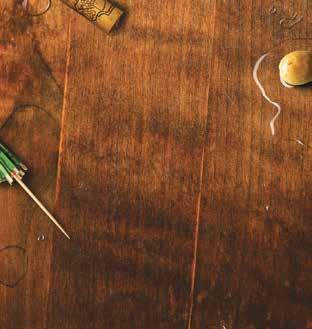
Other August health observances include
Breastfeeding Month, and Children’s Eye Health and Safety Month, both of which are covered in this issue. Appendix Cancer Awareness Month, Children’s Vision and Learning Month, Eye Exam Month, and Gastroparesis Awareness Month (delayed gastric emptying, a chronic condition that slows or stops the movement of food from the stomach to the small intestine), all are observed in August.
Let us not forget August is also the awareness month for hair loss, immunizations, medic alerts, minority donors, neurosurgery outreach, psoriasis, spinal muscular atrophy, StevensJohnson Syndrome (SJS), summer sun safety, and national wellness.
If you’re wondering which foods have their own monthly designations, look no further. August is the month for brownies at brunch; catfish; celery, fennel and cactus (one month for all three foods); eating dessert first; and goat cheese. It’s the month to get acquainted with kiwifruit and, of course, August is National Peach Month. But let’s not forget it’s also Rye Month and Sandwich Month, not to be outdone by Family Meals Month and Shop Online for Groceries Month and Kids Eat Right Month. Did you know sandwiches get their very own month? Yup, August is Sandwich Month.
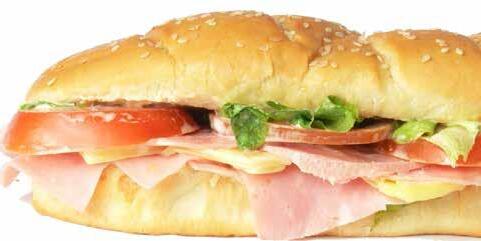
August has been designated as Back-to-School Month and Get Ready for Kindergarten Month. It’s also Child Support Awareness Month, Family Fun Month, and Truancy Prevention Month.
Wait, there’s more
Although we’d run out of pages listing every single August designation, we do want to include these honorable mentions:
Admit You’re Happy Month, so you can act like a Clown Month, while you’re on your American Adventures Month.
It’s Arrr-Gust for Pirate Month, Dog-ust (August first) for shelter dogs, and Raw-gust for feeding your dogs a raw diet.
It’s American Artist Appreciation Month and Apprenticeship Month. It’s also Black August, Black Business Month, and Black Philanthropy Month.
August is Boomers Making a Difference Month, unless you’re just standing around, then it’s Bystander Awareness Month.
It’s Happiness Happens Month, especially if you’re a bit eccentric, and are super happy that it’s Cowgirl Month.
It’s Also Drawing Month with your Crayon Collection Month.
August is Anti-Frizz Month. Alberto VO5 established this one in 2013 for awareness of — you guessed it — frizzy hair.
August is also the month for being a digital nomad, not being a bully, golfing, home business, inventors, and learning Japanese.
If you’re bored, it’s Read a Romance Month in the Parks Month, while you’re riding your Motorsports Month. But be
careful, as it’s also Road Victim Month and Traffic Awareness Month.
Don’t forget the daily designations
If all these monthly designations weren’t enough (and we’ve left plenty out), there are also weekly and daily designations for August.
August 1 is India Pale Ale (IPA) Day, while the 2nd is Beer Day. Don’t consume too much, or you’ll be paying the price on the 6th, which is Hangover Day (which is also Fresh Breath Day).
Someone had fun naming August 5 as National Underwear Day, which is also Green Pepper Day, and Work Like a Dog Day.
August has daily observances for things like homemade pie, Spiderman, and dinosaurs. There’s Farmworker Appreciation Day, Gossip Day, and Cat Day.
August 7 is reserved for Particularly Preposterous Packaging Day. It’s also set aside for lighthouses, professional speakers, and sea serpents.
There’s a Dollar Day in August, a Frozen Custard Day, and a Happiness Happens Day.
You can celebrate Book Lovers Day, Bowling Day, and Herbert Hoover Day, which all take place on Lazy Day.
There’s even an appreciation day for skyscrapers. There’s a Smithsonian Day and a Spoil Your Dog Day.
August 11 is reserved for Align Your Teeth Day, Annual Medical Checkup Day, and Hip Hop Day, among others.
You can celebrate Baseball Fans Day, Elephant Day, and Julienne Fries Day. Middle Child Day is August 12.
If you’re regretting your August 14 Lizard Day tattoo, you can have it removed on Tattoo Removal Day, which happens to also be August 14.
August has days for banana lovers and black cat lovers, bad poetry, and spumoni. Of all the days set aside to remember, honor, and appreciate, here at Lake Cumberland Compass, we appreciate YOU, our readers, EVERY day! n
Dog-ust, known as the universal shelter pet birthday, is a celebration of all dogs whose dates of birth are unknown. Photo by by Péter Göblyös for Pixabay.

Lake Cumberland Alzheimer’s Caregiver Support Group is for caregivers and other interested people. They meet the second Monday of each month at 6:00 p.m. at Cumberland Church of Christ in Somerset.
u u u
Pulaski Alzheimer’s Disease Respite is located at 393 South Main Street, Somerset, 606-679-9310
u u u
Pulaski County Senior Center 255 Maple Street Somerset, (606) 679-0590
u u u
AppalReD Legal Aid Somerset Office: 108 College Street, Somerset, 606-679-7313 or 800-866-7313
u u u
Lake Cumberland Area Development District Counties Served: Adair, Casey, Clinton, Cumberland, Green, McCreary, Pulaski, Russell, Taylor and Wayne. https://www.lcadd.org/ 2384 Lakeway Drive, Russell Springs, Toll Free: 1-800-264-7093
u u u
Friend for Life Cancer Support Network provides one-to-one peer support for cancer patients and their family members at no cost, assisting individuals diagnosed with cancer and their loved ones as they navigate the path through diagnosis, treatment, recovery, and survival by pairing them with a trained survivor of a similar experience so they can face cancer with someone who’s been there. www.friend4life.org or 502-893-0643.
u u u
Lake Cumberland District Ombudsman (Long Term Care) Serving Adair, Casey, Clinton, Cumberland, Green, McCreary, Pulaski, Russell, Taylor, and Wayne counties. Advocates for residents of nursing homes, personal care
homes and family care homes, improving care and encouraging positive change at all levels. Lake Cumberland ADD, P.O. Box 1570, Russell Springs, Toll Free: 1-800-264-7093
u u u

Hospice Adult Grief Support
Meetings are free and open to the public. Somerset bereavement group meets year-round, on the 4th Monday of the month, from 5:30 - 7:00 p.m. at 100 Parkview Drive in Somerset. Check website for more information: https:// hospicelc.org/ Call for children’s bereavement services: 800-937-9596
u u u

Operation UNITE - Lake Cumberland Chapter, (an acronymn for Unlawful Narcotics Investigations, Treatment and Education), reflects the three-pronged, comprehensive approach deemed necessary to combating substance abuse and misuse. Open meetings for local chapters are held on a recurring monthly basis. The Pulaski County chapter meets on the second Monday of each month at 1 p.m. in the conference room at the Pulaski County Health Department.
u u u
LCRH “Latch with Love” offers free, drop-in, informal breastfeeding support, including professional lactation care. This provides breastfeeding families an opportunity for social connection as they navigate challenges and celebrate successes together. Sponsored by LCRH. Check website for info: lakecumberlandhospital.com/ events.

u u u
Breastfeeding and Prenatal Classes — Help families welcome new babies with free classes including getting ready for delivery, basics of newborn care, infant bathing, safety and wellness, how to prepare for breastfeeding, and much more. Hosted by Ashley Hoseclaw, MSN, RN, IBCLC, Perinatal Educator and Lactation Consultant. 2024 classes are offered monthly on Tuesday evenings or Saturday mornings. Full class with both components takes about 3 hours. Please register in advance to save your spot. For questions or more information, call 606-678-3176 or visit lakecumberlandhospital.com/ women-and-children.
u u u
Lake Cumberland Community Action Agency, committed to improving the health and welfare of the less fortunate through a variety of services and community partnerships to ensure self-sufficiency and economic stability.
100 N. Main Street, Somerset, Suite 302, 606-679-6203, https://lc-caa.org/
u u u
There is a breast cancer support group that meets once a month, every third Thursday, usually at Mellow Mushroom in Somerset. The Facebook page available to request joining is: Breast Cancer and Beyond Support Group - Somerset. Admins are Jeri English and Gayle Allen.
While we’ve made every attempt to verify accuracy of the content of our resources page, we appreciate your input in helping us make corrections and suggesting additions. We’ll do our best to include as much as space allows and will give priority to health and wellness related groups and resources that are free and open to the public. Our deadline is the second Friday of each month. Please include a small blurb about the organization, who it serves, how to contact you, where you are located, etc. Please be brief so we can include as many resources as space permits. We will not publish random requests from links that are sent to us or if emails or URLs bounce. Email info@ LCCompass.com.

List of community resources: https://secure.lcdhd.org/resources/county/pulaski.pdf

We’ve determined that the lower press run works well for us, allowing more focus to be placed on growing our number of online readers. With a lower overhead, we can pass the savings to you! You can still find 1,500 - 2,000 printed copies all over the county, including at our local libraries, medical facilities, and many other locations.
Running an ad in the Compass isn’t limited to print. EVERY ad with a URL is hyperlinked in our digital version. Plus, half page and larger ads are automatically placed in our blog, alongside an article from that month AND mentioned on our social media. Links go directly to YOUR content!
Reserve your ad space early to guarantee placement and allow ample time for the professional design of your ad.
Press ready files or acceptance of artwork created by our designers, should be received in our office by the second Friday of the month for inclusion in the following month’s issue. We cannot extend deadlines
or we risk missing our press deadlines. It takes time to get the files ready, printed, cut, stitched, and back to us for delivery from our Louisville printer at the top of the month.
Your files may be submitted via email in press-ready PDF format with all fonts embedded. Other file formats accepted at publisher’s discretion. Be sure to use 300 dpi images. You can always have our award-winning designer make an ad for you t no charge.
Special placement requests are honored on a first come basis and are only guaranteed when reserved in advance. Ask us about

customizing an ad size to meet your needs!
The publisher is not responsible for files improperly submitted, errors in ads, or for substandard or late submissions. We reserve the right to refuse advertising or ad materials, or to cancel ad contracts. Payments or deposits may be refunded if ads are canceled prior to the materials deadline. Publisher’s liability shall be limited to the amount paid by the advertiser.
Ads which are not prepaid will be invoiced by mail or email after each issue is distributed and are due net 15 days.
Facebook is the only social media we utilize. With each half page or larger print ad, we’ll mention you with links to your content. Purchase individual sponsor posts for $25.
